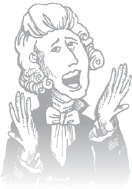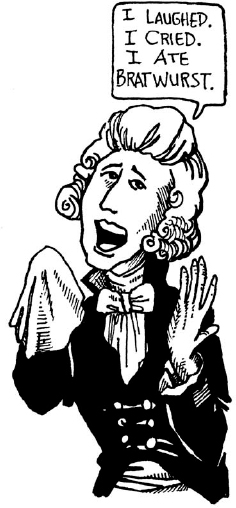

In the late eighteenth century, we see the development of a new idiom known as the classical style, among many other names. Ambiguously, the term “classical” can refer broadly to all art music of all periods composed in the vein that we have studied thus far (and will continue to examine in the remaining chapters). More narrowly it can be used to describe specifically the style of the late eighteenth century. This ambiguity is not without reason: in the nineteenth century, the music of Bach, Handel, Haydn, Mozart, and Beethoven were considered the classics of music, much like the classics of literature and art, and their music formed the core of classical repertoire. Later in the nineteenth and twentieth centuries, that term grew to encompass all art music composed. The term “Baroque” then became the term used to describe the music of Bach and Handel, with “classical” left to describe that of the late eighteenth century. This is how one can say that not all classical music is classical!

Returning to the classical style itself, another common name for the style that developed in the late eighteenth century was galant, a French term that began as a description for the courtly manner of literature and soon became used to describe anything and everything that was modern, chic, sophisticated, and in style.
Juxtaposed against the learned or strict style of writing (which later we would call Baroque), the galant style was freer, more song-like, and with short-breathed, repeated gestures. The galant style also placed unprecedented emphasis on the tunefulness and importance of the melody, which was accompanied by simple harmonies.
Another term similar to the galant style was the empfindsamer Stil (German for “sentimental style”), known generally as the empfindsam style. Given its etymological roots, it's no wonder that the term is associated primarily with German music; music marked by surprising turns in harmony, anxious rhythmic activity, and free, speech-like melody. Despite its German name and application, the empfindsam style—like the galant style—originated in the description of Italian music. Regardless of the terminology used, the classical style took its shape from the influence of vocal music, and this classical style will soon apply to instrumental works, creating a new approach to melody and form. What is important to remember is that the Baroque style did not suddenly fall out of fashion on the first day of 1750; rather, the Baroque and the Classical styles overlapped for a number of years, nearly until the turn of the century.

In the Classical period, composers still concerned themselves with the affections. A new ideology in the field of human psychology led to innovations in the emotional qualities of music. Those who studied human psychology believed that that once a person experiences or rouses a particular emotion, he or she would remain under the influence of that affect until moved to a different affect. In the Baroque period, composers aimed to evoke a single affect for a single movement or section of music. In contrast, composers in the Classical period realized that the emotional state was fluid, and thus a single movement of music could evoke a variety of emotions. This is what paved the way for unexpected turns in the character of music in the Classical period.